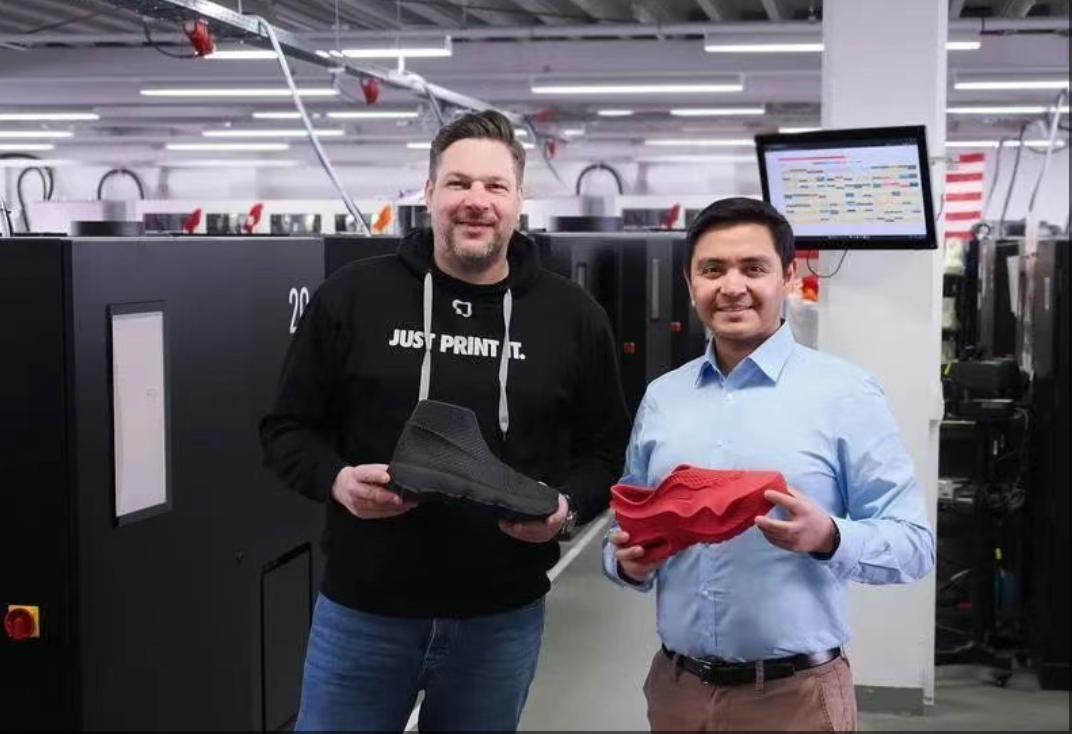For over a century, the footwear industry has relied on traditional methods—molds, cutting, and gluing. Even today, making something like a sneaker midsole typically involves expensive and time-consuming tooling. But 3D printing is changing the game. It allows manufacturers to directly print soles—or even entire shoes in one piece—enabling precise control over density distribution and unlocking complex structures that traditional molds can’t achieve. This may be the first specialized sector where large-scale 3D printing truly takes off.

Scaling from 200 to 5,000 Networked 3D Printers
Zellerfeld, an emerging force in shoe manufacturing, is partnering with Germany’s Fraunhofer IAPT Institute to dramatically expand its additive manufacturing capabilities. What began in a New York basement has grown into a factory with 200 self-built 3D printers. Now, the company is planning an even larger digital manufacturing facility, aiming to scale up to thousands—or even 5,000—machines.
With a fully digital process powered by personalized foot scanning, Zellerfeld produces custom 3D-printed footwear on demand. The goal is to reshape the industry by offering functional shoes with diverse, customizable designs. Their vision is a “fully digital footwear ecosystem”: customers scan their feet, designs are created in the cloud, printed locally, and delivered within 48 hours—all with zero inventory. The company has already opened “print-and-pick-up” stores in New York and Berlin to support this model. Demand has surged, pushing Zellerfeld to rapidly scale production.
To ensure success, Zellerfeld has enlisted Fraunhofer IAPT to provide expertise across the entire additive manufacturing process. The first phase of the project has been completed, with both parties defining the requirements for high-volume production. The IAPT team has audited and evaluated key metrics for scaling, identified production bottlenecks, highlighted opportunities, and proposed actionable strategies. They also offered technical and regulatory guidance for future production facilities, along with comprehensive needs assessments and long-term development plans.

Leave a Reply